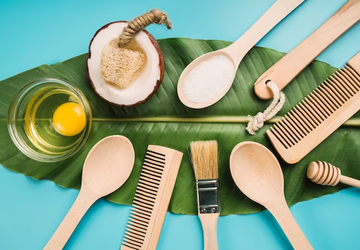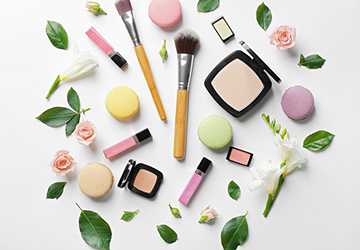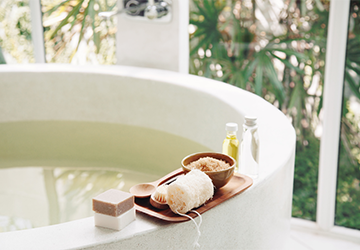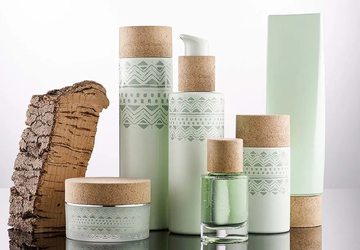The Ultimate Guide to Sustainable Beauty
The beauty industry is transforming in the contemporary age, where environmental concerns are at the forefront of global discussions. No longer is it just about looking good; it's about feeling good and doing good. Enter the world of sustainable beauty—a realm where cosmetics meet conscience. With a surge in eco-friendly makeup products, this guide seeks to equip you with knowledge and strategies to adopt sustainable beauty practices. By embracing green beauty brands and emphasizing responsible cosmetics shopping, you can indulge in beauty rituals that celebrate aesthetics and ethics.
1. Understanding Sustainable Beauty
Sustainable beauty transcends merely using organic ingredients. It encompasses a holistic approach, considering the environmental footprint at every production stage, from sourcing ingredients to packaging. It’s about reducing waste, promoting ethical testing methods, and ensuring that the entire lifecycle of a product doesn't harm the environment or its inhabitants. Consumers increasingly demand transparency, so the drive towards eco-friendly makeup products has skyrocketed.

2. The Rise of Green Beauty Brands
With sustainability becoming a buzzword, numerous brands align with the green movement. These green beauty brands prioritize natural ingredients, shun harmful chemicals, employ ethical testing practices, and focus on recyclable or biodegradable packaging. Brands like Tata Harper, RMS Beauty, and Ilia have positioned themselves as leaders in this segment, offering high-quality, environmentally responsible options.
3. Sustainable Beauty Practices at Home
Adopting sustainable beauty practices isn’t restricted to purchasing habits. It extends to our daily routines. This can include:
● Using multi-purpose products to reduce the number of items and, consequently, the waste.
● Repurposing product containers and turning old jars into storage units or plant pots.
● Reducing water wastage by turning off the tap when applying products or minimizing long showers.
● Regularly cleaning and caring for tools like brushes to extend their lifespan, thus reducing the frequency of replacements.
4. Navigating Responsible Cosmetics Shopping
While many brands tout green credentials, discerning genuine commitment from marketing gimmicks is essential. Responsible cosmetics shopping involves:
● Reading product labels to understand ingredient lists. Prioritize products with shorter, recognizable ingredient names, which often indicate natural components.
● Researching brand ethics: Beyond product ingredients
● Supporting brands with refillable options: An increasing number of brands offer refills for their products, which means less waste from packaging.
● Checking certifications: Reliable third-party certifications, like ECOCERT or the Soil Association, can assure a brand's commitment to sustainability.
● Opting for minimal packaging: Brands that minimize unnecessary boxes, wrappers, or plastic components typically align better with sustainable philosophies.
Your role in sustainable beauty isn't just as a consumer and an advocate. Sharing knowledge about eco-friendly makeup products, spotlighting and supporting commendable green beauty brands, and enlightening peers about sustainable beauty practices can create ripples of change. By creating or joining forums, writing blogs, or even through casual conversations, you can be an influencer in your own right, guiding many toward responsible cosmetics shopping.
6. Sustainability Beyond Ingredients
While natural ingredients are a significant aspect of sustainable beauty, the sustainability narrative extends further. It includes factors like energy-efficient manufacturing processes, sustainable sourcing wherein raw materials are harvested without depleting them, and fair wages and working conditions for those in the supply chain. Thus, a genuinely sustainable product has a holistic approach, considering environmental and social factors.
7. The Environmental Impact of Packaging
Sustainable beauty also places a strong emphasis on packaging. Biodegradable or recyclable packaging options, like glass and certain plastics, are preferred. Some innovative green beauty brands have even ventured into compostable packaging, further minimizing environmental harm. When engaging in responsible cosmetics shopping, evaluating the packaging is as crucial as scrutinizing the product it houses.
The 'slow beauty' movement advocates for quality over quantity in a world driven by rapid consumption. Instead of hoarding numerous products, the emphasis is on investing in fewer, high-quality items that serve multiple purposes and last longer. This approach ensures better skin health due to fewer chemicals and higher-quality ingredients and significantly reduces waste.
The Importance of Water Conservation in Sustainable Beauty
1. Waterless Beauty Revolution
One of the emerging trends in the realm of sustainable beauty is the shift towards waterless products. Traditionally, water constitutes a significant portion of many beauty products, sometimes as much as 70% to 80%. Green beauty brands are reducing their water footprint by reducing or eliminating water from formulas. Products like solid shampoos, conditioners, and waterless cleansers are taking center stage, marking a pivotal shift in eco-friendly makeup products.

For products that do require water, the way this resource is sourced and utilized holds paramount importance. Ethical brands ensure they're not depleting local water sources and prioritize recycling and reusing water within their manufacturing processes. Brands focusing on such practices must be included in any responsible cosmetics shopping list.
The Rise of Vegan and Cruelty-Free Beauty
3. Beyond Ingredients – The Ethical Choice
Many consumers now look beyond just the environmental impact; they want products that are kind to Earth and its inhabitants. Vegan beauty products ensure no animal-derived ingredients are used, while cruelty-free labels guarantee that the product and its ingredients haven't been tested on animals. This ethical dimension adds another layer to sustainable beauty practices, advocating for compassion in cosmetics.
While many brands might claim to be vegan or cruelty-free, it's essential to look for certifications from reputed organizations like Leaping Bunny or PETA. These certifications offer a more transparent insight, ensuring you're genuinely investing in eco-friendly makeup products.
Traditionally seen as an industry of aesthetics, the beauty realm is now morphing into a domain of ethics. As we stand on the cusp of this transformative era, being equipped with the proper knowledge and intention is vital. Sustainable beauty is not just a trend but a paradigm shift—a movement combining self-care with Earth care. By championing eco-friendly makeup products, integrating sustainable beauty practices, endorsing genuine green beauty brands, and practicing responsible cosmetics shopping, every individual can contribute to a greener, more beautiful world. Remember, every product choice is a vote for the world you want to live in.







